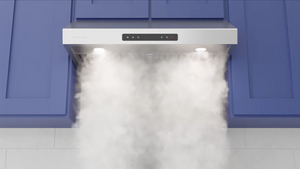Must Know Facts About Indoor Air Quality
Indoor air quality (IAQ) is often overlooked when it comes to home maintenance. However, air quality has a direct effect on your health; poor IAQ can cause headaches, respiratory issues, dizziness, fatigue, and more. Given how much time we spend indoors, it’s essential to take steps to understand and improve IAQ.

Understanding Indoor Air Quality (IAQ)

There are a number of factors that determine the quality and cleanliness of indoor air, including:
- Ventilation: Proper ventilation ensures that fresh air circulates through your home, displacing stagnant air and pollutants.
- Humidity: High humidity can support the growth of mold and dust mites. It's essential to maintain humidity levels between 30% to 50%.
- Airborne Pollutants: These include pollen, dust, pet dander, and mold spores. High concentrations can lead to allergies and other respiratory conditions.
- Chemical Pollutants: Household products, pesticides, tobacco smoke, and volatile organic compounds (VOCs) from paints and finishes can degrade IAQ.
The Role of Cooking in Indoor Air Quality

Cooking is a daily activity in most homes and can significantly impact indoor air quality. Cooking can introduce several types of pollutants:
- Particulates: Produced when food is fried or grilled, these tiny particles can become airborne and inhaled.
- Gasses: Cooking, especially on gas stoves, can release harmful gasses like nitrogen dioxide, carbon monoxide, and formaldehyde.
- Odors and VOCs: These are the smells that come from cooking food, and while they might be appetizing at the moment, lingering odors can become a nuisance.
How is Indoor Air Quality Measured?

Various instruments and devices are used to detect how healthy indoor air is.
These devices can be purchased online and include air quality monitors, data loggers, and sensors. Indoor air quality technology provides real-time or continuous data on any present air pollutants such as those mentioned above. The level of air quality is determined by how many pollutants exist during testing. It's important to note that guidelines and recommended levels for these parameters can vary based on factors such as local regulations, building type, and occupancy.
How Range Hoods Can Help Improve Indoor Air Quality

A range hood is designed to remove odors, heat, and pollutants that are released during cooking by filtering and exhausting them outside.
- Protects Your Health: By removing pollutants and particulates, range hoods reduce the risk of respiratory issues, eye irritations, and even long-term health effects.
- Preserves Home Cleanliness: Grease and particulates from cooking can settle on cabinets, walls, and other surfaces. A range hood helps reduce this accumulation.
- Eliminates Odors: Even the most delicious meal can leave behind lingering odors. Range hoods ensure these odors are swiftly removed, maintaining a fresh indoor environment.
- Enhances Property Value: Modern homes prioritize indoor air quality. A well-maintained kitchen with a functional range hood can be a selling point.
Shop Powerful Range Hoods
From HAUSLANE
Key Takeaway:
For best results, be sure to run your range hood every time you cook and stay up-to-date on maintenance.








